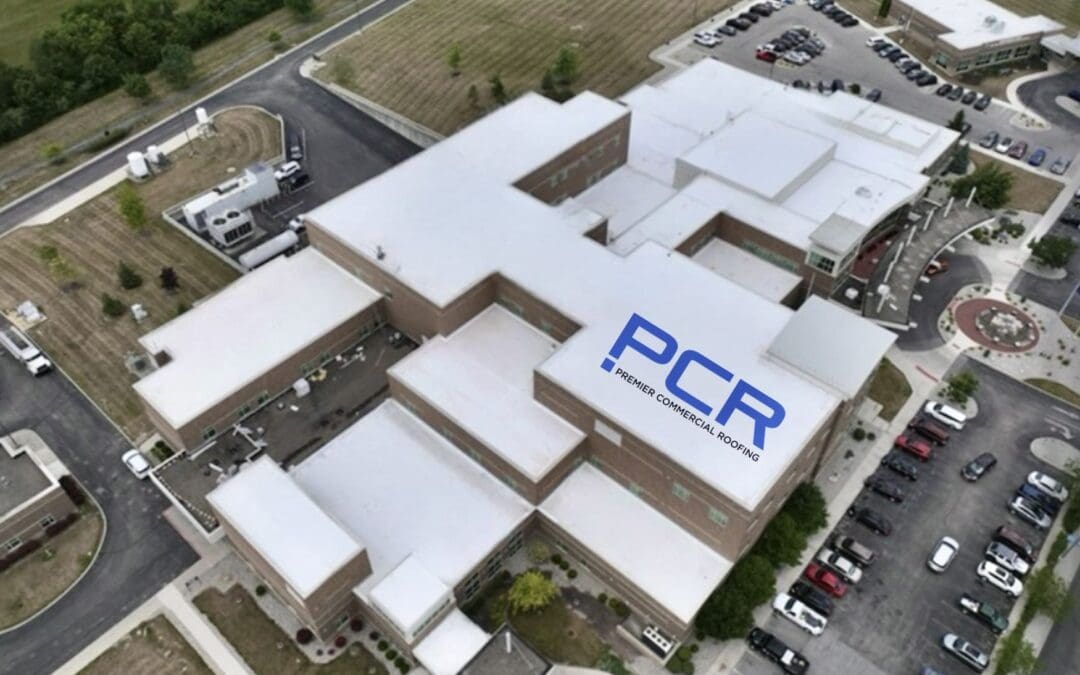Can a Commercial Roof Be Repaired Instead of Replaced? Here’s What to Know
A failing commercial roof doesn’t always mean you need to tear it off and start from scratch. In fact, one of the most common questions we hear at Premier Commercial Roofing is:
“Can my commercial roof be repaired instead of replaced?”
The short answer is: Yes, but it depends on the condition of your roof, the type of damage, and how proactive you are.
In this blog, we’ll help you understand when repairs are sufficient, when full replacement is necessary, and how to make the smartest decision for your building and your budget.
Why This Question Matters
Your roof plays a critical role in protecting your building, inventory, tenants, and daily operations. But commercial roofing systems aren’t cheap—so if you can avoid full replacement without risking bigger problems down the road, it’s worth considering.
Let’s explore the factors that determine whether a repair or a replacement is the better choice.
Common Signs of Commercial Roof Damage
Before we get into repairs vs. replacement, let’s identify the most common signs that your commercial roof needs attention:
- Persistent roof leaks
- Blistering, bubbling, or cracking in the membrane
- Standing water or poor drainage
- Visible punctures, tears, or holes
- Flashing separation around vents or HVAC units
- Water stains on interior ceilings or walls
- Rising energy bills from lost insulation
If you’ve noticed any of these issues, it’s time for a professional inspection to assess the severity and scope.
Factors That Determine If a Roof Can Be Repaired
Not every issue requires a complete overhaul. In many cases, targeted repairs can restore functionality and buy time before a major investment is needed.
Here’s what we look at when deciding between repair and replacement:
1. Age of the Roof
Most commercial roofs have a lifespan of 15 to 30 years, depending on material and maintenance.
- If your roof is less than 10–15 years old, repairs are often a smart and cost-effective solution.
- If your roof is at or beyond its expected lifespan, it may be more economical to replace it rather than patch it repeatedly.
2. Extent of the Damage
A small leak or isolated tear? That’s a repair.
Widespread membrane failure, structural issues, or moisture trapped under insulation? You may be looking at replacement.
Pro Tip: If more than 25–30% of your roof is damaged, replacement is often more cost-effective in the long run.
3. Roofing Material Type
Different commercial roofing systems respond differently to repairs:
- TPO/PVC/EPDM: Membrane roofs can often be heat-welded or patched effectively.
- Built-Up Roofing (BUR): Repairs can be messy but are usually possible for minor issues.
- Metal Roofing: Fastener issues, rust spots, or seam problems can usually be addressed.
- Modified Bitumen: Small cracks or blistering can often be repaired with proper technique.
At Premier Commercial Roofing, we work with all major commercial roof types and tailor the solution based on your exact system.
4. Previous Repairs & Maintenance History
If your roof has had repeated repairs over the years, especially in the same areas, it may indicate a deeper issue that repairs alone can’t fix.
Also, lack of regular maintenance may have allowed minor issues to escalate, pushing you toward full replacement.
5. Roof Deck and Insulation Condition
We often conduct infrared scans or core samples to check for trapped moisture under the membrane. If the insulation or decking is wet, rotted, or deteriorating, repairs won’t be enough—you’ll need replacement.
When Repair Is the Right Choice
Let’s say your roof is under 15 years old, damage is isolated, and the system is otherwise in good shape. In that case, repairing your roof may offer:
✅ Lower upfront cost
✅ Minimal disruption to business operations
✅ Extended roof lifespan
✅ Protection against further water intrusion
Our team can handle everything from patching leaks to resealing seams and fixing flashing—all backed by expert craftsmanship and commercial-grade materials.
When It’s Time for Full Replacement
There are times when repairs just won’t cut it. You may need to consider replacement if:
- Your roof is 20+ years old
- There is widespread or recurring leakage
- Moisture has compromised the insulation or decking
- The roof fails to meet current building codes
- You want to upgrade to a more energy-efficient system
- You’ve had multiple failed repairs
While a full roof replacement is a bigger investment upfront, it can save you thousands over time through better performance, warranties, and energy efficiency.
Is a Roof Coating a Middle Ground?
Sometimes, neither repair nor full replacement is the only option. A roof coating system can be applied to certain types of commercial roofs to:
- Seal leaks
- Extend the roof’s life by 10–20 years
- Improve energy efficiency with reflective surfaces
- Avoid tear-off and landfill disposal
Coatings are ideal for roofs in fair condition that need extra protection without the high cost of replacement. Premier Commercial Roofing offers coating systems for TPO, EPDM, metal, and more.
Cost Comparison: Repair vs. Replacement
| Service | Cost Range (per sq. ft.) | Typical Lifespan Extension |
| Repair | $2 – $6 | 1–5 years |
| Coating | $4 – $10 | 10–20 years |
| Replacement | $7 – $20+ | 20–30+ years |
These are general ranges. Final pricing depends on material type, roof size, and project complexity.
Final Thoughts: Make the Smart Choice for Your Roof
Knowing whether to repair or replace your commercial roof isn’t always straightforward—but you don’t have to make the decision alone.
At Premier Commercial Roofing, we provide:
- Comprehensive roof inspections
- Honest evaluations
- Clear repair vs. replacement recommendations
- Transparent pricing
- Expert execution—whatever the solution
We don’t push unnecessary replacements. Our goal is to help you protect your building, extend your roof’s life, and make the best decision for your budget.





